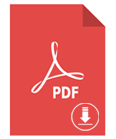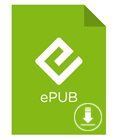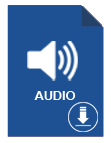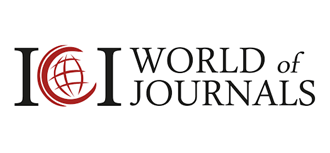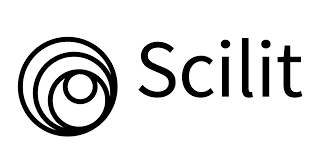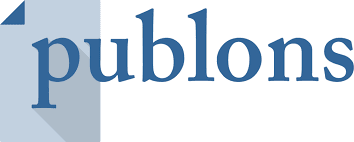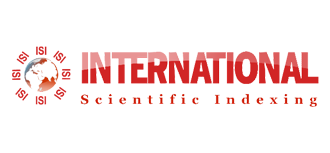Social Media and COVID-19 Pandemic
Ananth N*
A/Nurse researcher, Hamad medical corporation, Qatar
Submission: June 10, 2021; Published: June 15, 2021
*Corresponding author: Ananth N, A/Nurse researcher, Hamad medical corporation, Qatar
How to cite this article: Ananth N*. Social Media and COVID-19 Pandemic. Psychol Behav Sci Int J. 2021; 17(1): 555955. DOI: 10.19080/PBSIJ.2021.17.555955
Abstract
Objective: To explore the association between cardiovascular autonomic nerve abnormalities and cognitive function in Parkinson’s disease pateints.
Methods: 78 newly diagnosed patients with PD were recruited from the third hospital of Mianyang from June 1, 2016 to December 31, 2019. All participants underwent physical examinations and auxiliary examinations, including electrocardiogram, echocardiography. Neuropsychological scales were used to evaluate their global cognitive function,memory function,fluency,executive function and processing speed.The association between cardiovascular autonomic nerve abnormalities and cognitive funotion via linear regression analysis was assessed.
Results: The cognition impairment group showed poorer performances on MMSE (<0.001) , MoCA-B(<0.001), episodic memory(P<0.05 ), language(<0.001), and executive function(P<0.05 ) than the normal cognition group. No significant difference was observed in the scores of information prosessing speed (P>0.05 ). Linear regression analysis was conducted with systolic blood pressure, diastolic blood pressure, RMSSD, pNN50% as independent variables and cognitive function score as dependent variables. The score of N5 in episodic memory linearly related to RMSSD (P<0.05 ). There was no significant linear relationship between the general cognition and the various cognitive domains and HRV. Conclusion: cardiovascular autonomic nerve abnormalities may play an important role in PDD pathogenesis, and improving cardiovascular autonomic nerve abnormalities might be helpful for the prevention of PDD.
Keywords: Cognition; Neuropsychological tests; Parkinson’s disease; Cardiovascular autonomic nerve abnormalities
Introduction
As the human civilization progress through the revaluations and innovations there are the changes in the natual phenomenon of earth, water, sky, air, and fire, which obviously have an impact on every humans’ wellbeing and health worldwide. Since the beginning of life on earth, humans come across various epidemics and pandemics, which caused panic, destruction, morbidity and mortality. The novel coronavirus infectious disease is a current pandemic, which results severe acute respiratory syndrome coronavirus-2 (SARS-CoV-2) worldwide. The coronavirus pandemic in the beginning identified in Wuhan city on 31 December 2019. The epidemic hastily spread to other cities in China. Later COVID-19 widely spread to all the countries around the world. Soon after COVID-19 was declared as the pandemic, as the Public Health Emergency as the “International Concern” on January 30 and an epidemic on March 11, 2020 by World Health Organization. In the 21st century, people almost all age group reported the tendency of excessive social media use, such as Facebook, provides platforms, and people can at least getting divert from their negative emotions. But the other hand, the dark side of social media resulting the addictive behavior and indulge with stress by the enormous information’s and rumors shared on those platforms [1]. This review explored how social media impacted its users during the COVID-19 pandemic.
Social Media is Contagion and Vector During COVID 19
According to WHO, the term infodemic, is a combination of information and epidemic, refers to a fast and widespread diffusion of both accurate and inaccurate information about an epidemic, such as COVID-19. Pulido and colleagues reported their analysis on 942 tweets that although high number of wrong information’s are tweeted, yet they had less retweets because of lack of scientific evidences to support them. Kouzy and colleague’s investigation echo’s the same that misinformation accounted for 24·8% (153 of 617) of all serious tweets (i.e., not humor-related posts). Health-care or public health accounts had the lowest amount of misinformation; yet still 12.3% (7 of 57) of their tweets included unverifiable information. Moscadelli and colleagues revealed after reviewing 2102 news articles that were viral on the social media’s that fake news was shared over 2 million times, which accounted for 23.1% (2 352 585 of 10 184 351) [2].
The Social Media Panic Travelled Faster Than the COVID-19 Spread
The studies conducted during the pandemic reveals that social media exposure had little effect on mental health. Nevertheless, other studies state that the spreading of fake and wrong information through social media led to many mental health problems, such as social isolation, poor individual relationships, family problems, post-traumatic stress disorder, anxiety, panic disorder, depression, and behavioral disorders. Misleading social media information has many psychological and social impacts on individuals during the pandemic, such as increased anxiety, depression and psychological stress. The effect of the COVID-19 crisis on mental health includes these negative psychological consequences. Dr. Tedros Ghebreyesus, Director-General of the World Health Organization (WHO), said, “the wrong information about COVID-19 may be the most infectious disease,” and he was shocked to see the spread of wrong information about the COVID-19 equal to the virus. The stress and shock critically affected the social and psychological well-being of the people who believes what they hear or see in the social medias [3].
Covid-19 Has Altered how We use social media
One solid truth of the pandemic is that all must be safe, by being apart from each other. This made all to choose to stay connected with their kin and kith than ever before as everyone’s life line is dynamic and unpredicted. So, people have moved mass among social media platforms. The new normal, work from home, lookdowns changed our daily interactions either personal or professional by screens. This pandemic bring-forth a novel state “All of a sudden we all have a shared experience.” Karen North, a clinical professor of digital social media at the University of Southern California stated that “One thing that brings people together is shared experiences,”, it is well evidenced by the time consumed by the social media in an Americans on average is 82 minutes per day on social media in 2020, a seven-minute jump from 2019. The vast number of social media platforms makes the people to swift around them to alleviate feelings of isolation and increases the sense of psychological comfort,” said Pamela Rutledge, director of the Media Psychology Research Center. Thus, to conclude that “Social media benefited the people to feel less lonely and less fearful to know they aren’t dealing with this alone.” [4].
Conclusion
Stay home and stay safe, is commonly heard slogan during this pandemic. This catastrophe made the readily available companion for most of the human beings especially in the developing and developed countries are social media. It carries positive thoughts to console and motivate however the same widespread the panic that is fatal. It’s up to the users, being wise to go around the social medias yet pick good stuffs to conserve their peace and joy.
References
- Abbas J, Wang D, Su Z, Ziapour A (2020) The role of social media in the advent of covid-19 pandemic: crisis management, mental health challenges and implications. Risk Management and Healthcare Policy 14: 1917-1932.
- Shu-feng T, Chen H, Tisseverasinghe T, Yang Y, Lianghua L, et al. (2021) What social media told us in the time of COVID-19: a scoping review. Lancet 3(3): E175-E194.
- Mohammad AH, Alqarni TM (2021) Psychosocial effects of social media on the Saudi society during the Coronavirus Disease 2019 pandemic: A cross-sectional study. Plos One 16(3): e0248811.
- Rani M (2021) Posting less, posting more, and tired of it all: How the pandemic has changed social media.




